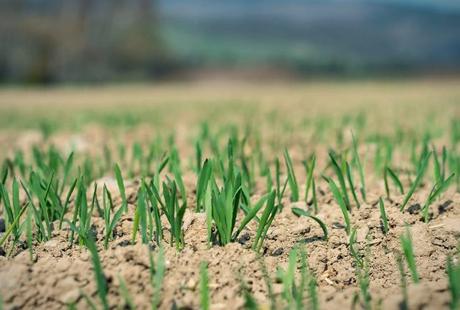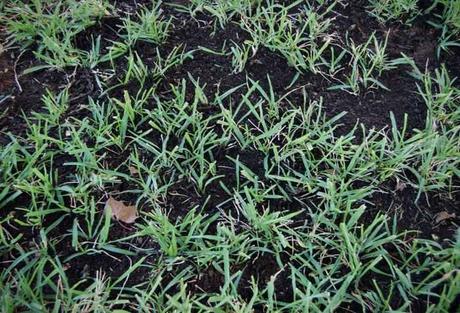Applying a thin layer of material over the lawn is an old tradition, known as topdressing. Apart from golf courses, it’s a practice that’s recently catching on among homeowners as well.
But why should you put sand on your lawn as a top dress?
Topdressing improves the look of your lawn, as well as the health of the grass and soil. If done properly, it’ll do so without killing the existing turf. But, in most cases, it’s done with sand, and that’s where the troubles begin. Why is it so?

Is Sand Good for Lawns?
If you’re new to the gardening world, you might be curious to know why to put sand on the grass. Speaking of which, it’s a common practice to apply sand over golf courses to maintain the greens. But, even though the sand works just fine on commercial areas, it’s not the best choice for domestic lawns.
That is to say, spreading sand over established turf will most likely do more harm than good. For instance, it can cause drainage and compaction problems while adding no nutritional value to the soil below. As a result, the lawn is most likely to lose its fertility. Additionally, applying too much sand unevenly will result in globs of sand, which will choke out the grass beneath.
Therefore, it’s highly recommended to look for other alternatives for topdressing rather than sand.

Alternatives to Sand for Lawn Topdressing
Since sand isn’t the best material to cover your lawn with, there’s an alternative that’ll efficiently do the job.
- Compost
As we already mentioned, golf courts, in most cases, are topdressed with sand. When it comes to domestic lawns, on the other hand, compost should be the number one choice for doing this. Speaking of which, it adds organic material to the soil, improving its condition, unlike the sand, which can’t retain any nutrients.
Furthermore, topdressing with compost can improve soil structure as well. For instance, in heavy clay soils, it improves the drainage and porosity. But, if you put sand instead, it won’t loosen it, but it’ll cause a cement-like soil. In sandy soils, on the other hand, the compost improves water retention.
But then again, it should be made properly and be of high quality, so you achieve the best, long term results. In other words, the compost should contain a variety of organic materials. Also, its pH value should be within the range of 6.5-8.0.
- Manure
Manure can serve as both fertilizer and mulch, being extremely beneficial to your lawn as well. It can alter poor soil structure and build fertility. However, the transfer of contaminants and pathogens from the manure to people is something to concern about when topdressing the soil with raw manure. You won’t consume the grass for sure, but the concern is primarily with pets and children. Dry manure, on the other hand, should be shredded small enough to prevent it from forming clumps.
What Type of Sand to Use for Lawns?
Although not recommended, if you decide to topdress your lawn with sand, go with coarse sand, which has larger particles, rather than fine sand. Speaking of which, consider the following sand types.
- River Sand
- Concrete Sand
- Masonry Sand
Don’t use sea sand though, as the salt will most likely damage the lawn. Also, if you need drainage, you can include the sand in your topdressing mix, up to a third.
And finally, keep in mind that topdressing materials should be applied evenly in a thin layer, about ¼ inch or less, that is.
Benefits of Topdressing Your Lawn
- Soil Improvement – Topdressing the lawn adds nutrients to the soil and improves drainage.
- Prevents Thatch Build-up – If your lawn has a build-up of dead roots, lawn debris, and dead turfgrass crowns, applying a thin layer of material will break it down, encouraging decomposition.
- Levels the Lawn – It’ll smooth out the uneven areas in your lawn.
- Improves Seed Germination – After seeding or overseeding, the topdressing will prevent the seedlings from dehydration.
- Renovates Distressed Lawn – When dealing with bare patches in your lawn and weed invasion, topdressing is the way to go to correct the soil conditions and incorporate new seed.
FAQs
So as the grass grows, apart from soil and water, it requires air, sunlight, as well as nutrients. But, the sand granules won’t retain water and nutrients for long. Therefore, it’s essential to prepare the soil accordingly and find the perfect grass type that tolerates such conditions, so it thrives.
Sand is defined by the diameter of its individual grains, which range from 1/16 to 2 millimeters. The best sand for drainage is medium to very coarse sand – that is, that whose particles range from 0.5 to 2 millimeters in size.
Ideally, do it when the grass is actively growing. That is to say, the best time to topdress cool-season grasses is late summer or early fall. For warm-season grasses, on the other hand, it’s for the best to do it in early summer.




